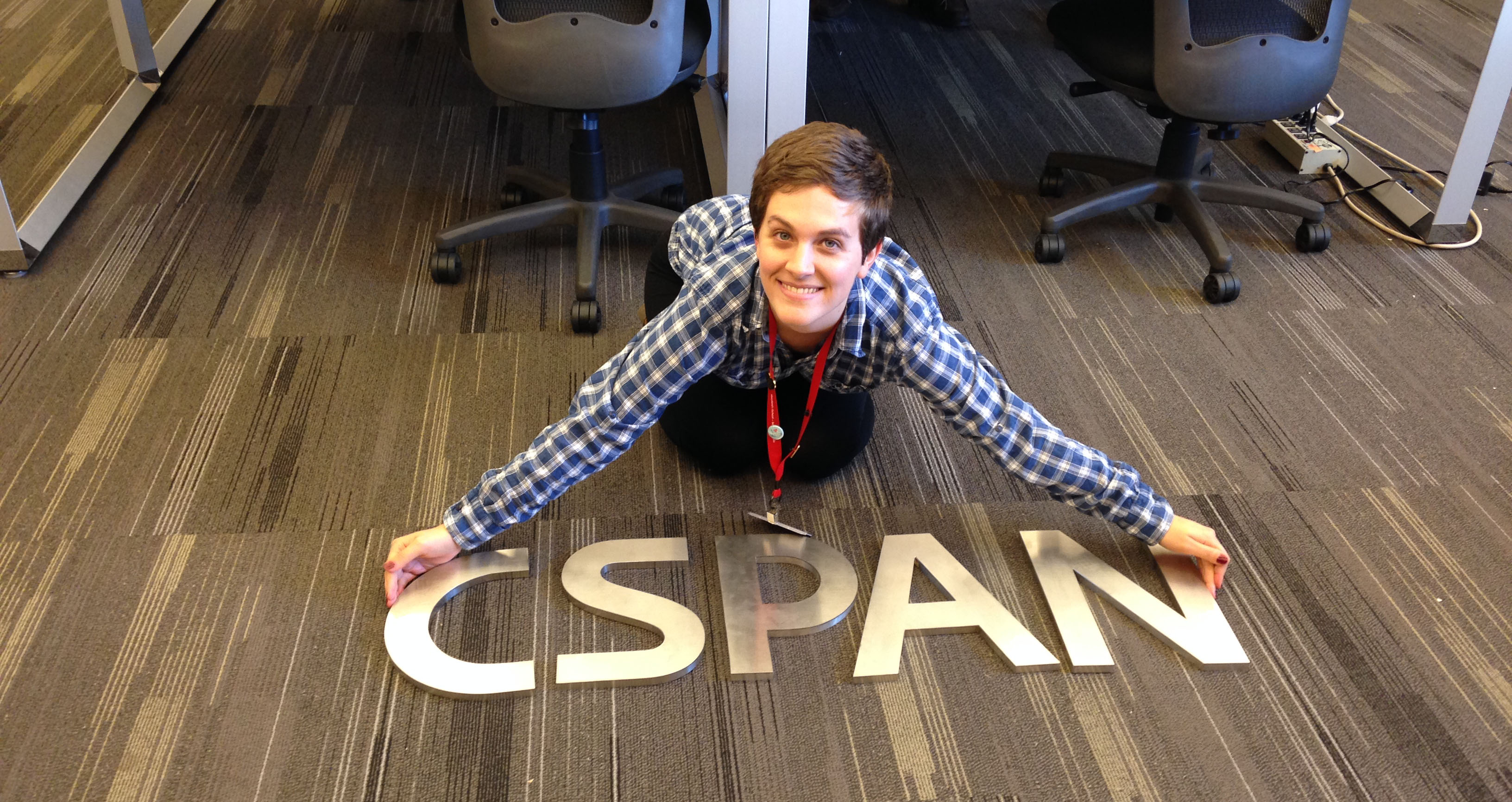Hello all!
Amanda here with another – and sadly the last – of the C-SPAN Chronicles. I thought it would be fun (and informative!) to reflect on the lessons I’ve learned undertaking and completing the processing portion of this project. It has been quite the journey, and since I began processing the C-SPAN records in March, I have learned many things about myself as an archivist, as well as how to be an even more efficient processor. I’ve condensed what I have learned into five things:
Take Your Time
As a processing archivist, this seems like a Catch-22. Though the majority of processing projects take a significant amount of time, archivists are often under a time and/or money crunch when completing projects. However, with those kinds of parameters in mind, I have found that rushing gets you nowhere in archival processing. Take your time to get to know the collection as thoroughly as possible. It can be tempting to rush through more tedious parts of processing, but you’ll only create headaches for yourself later if you don’t take your time in the moment.
Seek Help and Ask Questions
When processing any archival collection, your head is full of questions. How do you arrange this collection? What/how many series should I create? What IS THIS THING? Some questions are easy to answer, others to deduce, but sometimes you’re just stuck. Don’t be a hero. If you have a mentor or boss that can guide you, ask them to! Even though I have been working in various archives and special collections for over 5 years and have a Masters degree in the subject, sometimes my brain simply doesn’t function, or I don’t have as much experience as the next person. Learn from others’ mistakes, absorb their wisdom, and apply that to your next step or project. I’m lucky in that SCRC is full of experienced and friendly colleagues who also serve as mentors, and I have asked them many a question during this project.
Don’t Procrastinate
When you come across something unusual or a format you have little experience with, it can be easy to put it on the back burner. When it came to the audiovisual series of this collection, I was very tempted to do just that, and to an extent I did. However, I knew that I wanted/needed more experience with analog audiovisual materials, and sought out a workshop to attend on just that. I am glad that I ultimately waited to process that series after the workshop, because I handled it totally differently than I would have before. However, in future projects I will be more motivated to tackle parts of collections I am unsure of more quickly, and find ways to gain more knowledge about them sooner, rather than later.
Look for the Big Picture
When I’m in the nitty-gritty of processing, keeping my head down and just getting the work done is usually my modus operandi. However, you don’t want to get bogged down by this and lose sight of the project as a whole. I had never processed a collection as large as the C-SPAN records (200 linear feet) before I was hired as the C-SPAN Project Archivist. Due to this, I made sure to prioritize keeping track of my progress, goals, and adjusting these when necessary. I also would verbalize these goals to my bosses and colleagues, keeping me accountable in a sense. Having processed archival collections before, I also had a good idea of how long one particular task or step would take me, which made planning ahead much simpler.
Develop Your System and Get it Down Pat
Since I began processing archival collections, I have developed my own “system” for processing (More on that available in this post.) Every processing archivist has one, and though much of their system and its result fit into the larger framework of how their institution processes collections, it is important to know why you are doing something in a certain way. Working on one collection for so long has really helped me hone my system, and as a result I have firm and sensible answers when somebody questions my methods. Of course I am always open to constructive critique from my bosses and colleagues, but I find having a strong justification for the way you process something always helps – as do good results!
Well, that’s all guys! I hope you all have enjoyed taking this journey with me through the C-SPAN Chronicles. Thank you so much, and I’m sure I’ll see you around Vault 217 again!
Follow SCRC on Social Media at our Facebook, Instagram, and Twitter accounts. To search the collections held at Special Collections Research Center, go to our website and browse the finding aids by subject or title. You may also e-mail us at speccoll@gmu.edu or call 703-993-2220 if you would like to schedule an appointment, request materials, or if you have questions. Appointments are not necessary to request and view collections.

